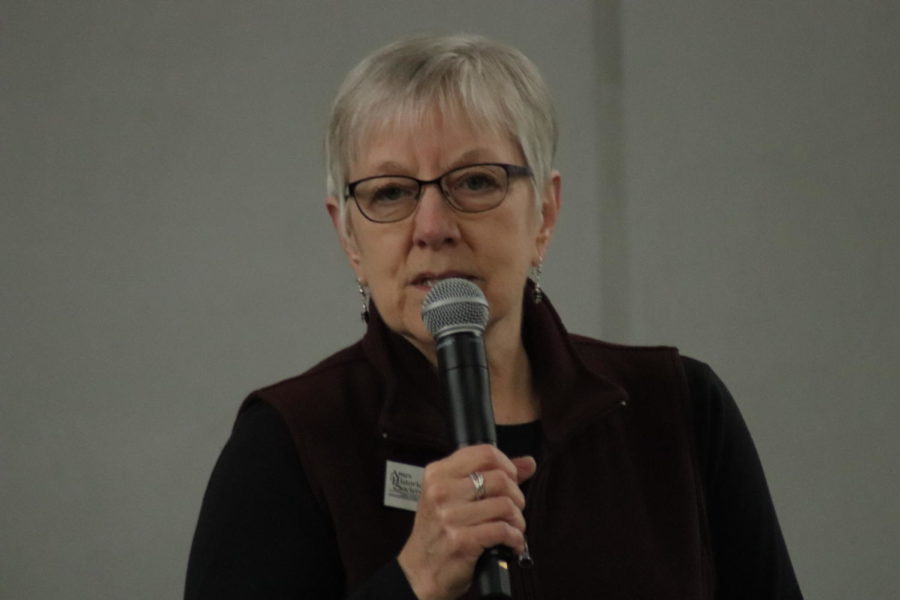Story of Ames connection to the Manhattan Project retold
Kathy Svec speaks to the public Feb. 5 in Morrill Hall about connections between Ames and the Manhattan Project from WW2, such as atomic bombs.
February 5, 2019
Iowa State played a role in the Manhattan project, which later became known as the Ames project.
Kathy Svec, daughter of researcher Harry Svec, presented to about 30 people on Tuesday about her father’s role in the Manhattan Project.
The Manhattan Project was a secret project during World War II to create the atomic bomb before Nazi Germany. Harry Svec’s involvement with this project would come to be known as the Ames Project.
Svec’s father graduated from John Carroll University in Cleveland, Ohio and went on to graduate school at what was then known as Iowa State College, where he studied chemistry.
While attending school in Ohio, Harry became interested in technical glassblowing and became an apprentice in tool and die, which would both later serve in his career, Svec said.
Harry Svec then went to Iowa State for graduate school and worked as a chemistry instructor. He met his future wife while working there.
At the same time, Svec said, her father got drafted as the military was gearing up for D-Day and the European Invasion.
He was sent to Fort Snelling in Minneapolis, Minnesota. After arriving, Harry and a group of about 500 other men awaited their physicals and locations to be sent.
Svec said Harry was one of the last few left in the room to see where he would be sent.
“The Sergeant ran his finger down the page and said he was to go down to Ames, Iowa,” Svec said.
Svec said that Harry was not sent to Europe because he was requested back at Iowa State to help in the chemistry department with his glass blowing techniques.
Dr. Frank Spedding, manager of the Ames Project, noticed Harry’s glassblowing techniques and later invited him to join the project when he returned.
With Harry having knowledge of high vacuum techniques, he incorporated the techniques into the research and processes.
Svec said her father arrived to the Ames Project late, sometime in 1944, so he was not with the project very long, but brought “essential ideas and information to the group.”
From this project birthed the creation of the Ames Laboratory/Institute of Atomic Research, of which Harry was appointed to after the completion of the Ames Project.
After earning his doctorate in 1950, Harry served in the chemical department as a faculty lecturer until his retirement in 1983, according to the Iowa State Special Collections website.
“I take a lot of pride in my father’s work,” Svec said. “He was a very intelligent man, devoting his life to teaching and research. The war project was a very auspicious start to a long career for my father that provided a lot of techniques and processes to the whole world.”
Editor’s note: This article originally misspelled “tool and die.”Additionally, the article has also been updated to reflect that Harry was not sent to Europe. The Daily regrets these errors.
















